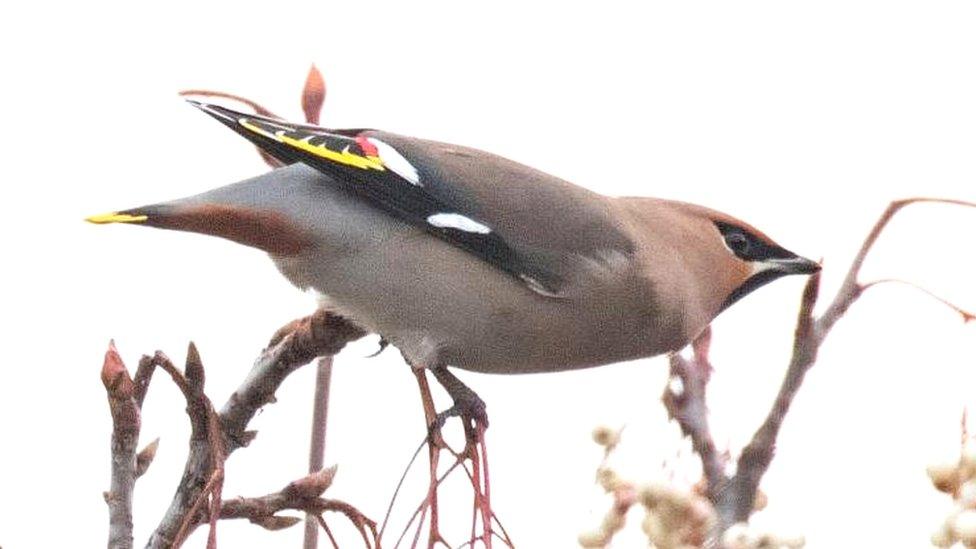Birdwatchers flock to sightings of waxwings in Corby
- Published
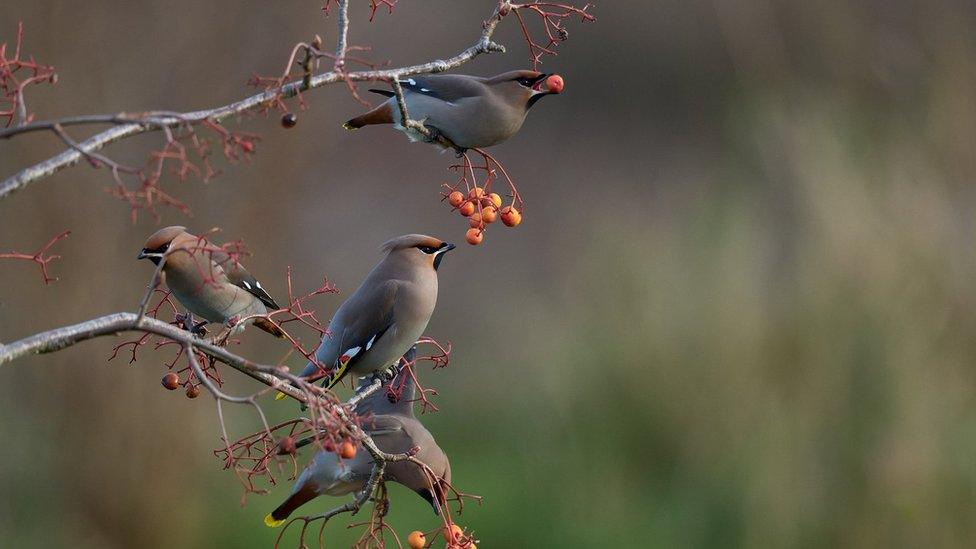
Wildlife photographer Tom Hanahoe captured the four birds in Corby on camera
Keen birdwatchers have been flocking to a housing estate to catch a glimpse of a much-loved visitor to Britain.
The exotic-looking waxwings have been spotted at Priors Hall Park in Corby, Northamptonshire.
The birds only come to the UK when food is lacking in their native forests in Russia and northern Europe.
Wildlife photographer Tom Hanahoe sped to the county to capture them on camera and described them as "truly beautiful".
On its website, the British Trust for Ornithology said "waxwings come to the UK in search of berries when crops run low closer to their breeding grounds in Fennoscandia and western Russia".
"As such [they] can turn up at any time during the winter and in varying numbers."
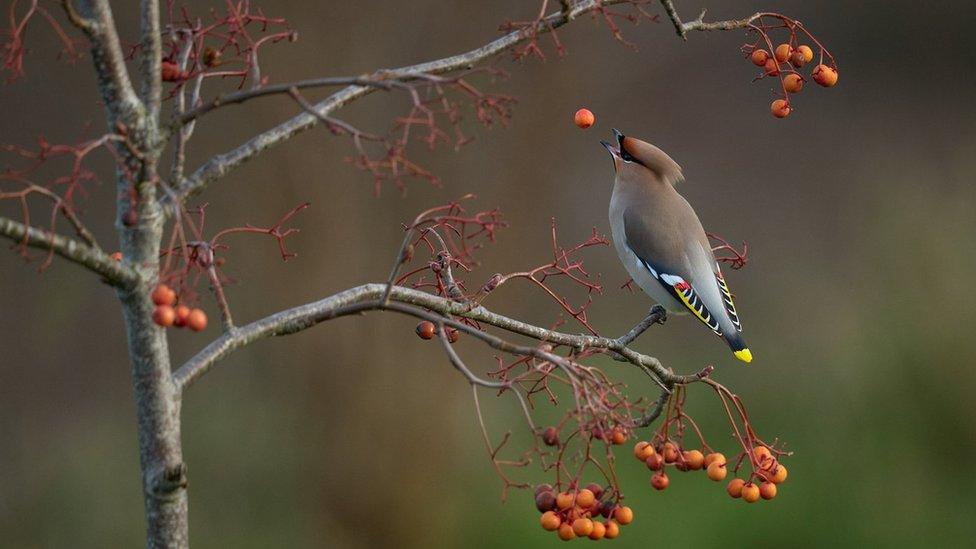
Waxwings eat berries from trees such as rowans
Mr Hanahoe, from Bedfordshire, said he heard from other twitchers that waxwings had been spotted in Stevenage in Hertfordshire, so he went there but missed them by about 15 minutes.
Then he was told about sightings in Corby, so travelled there to join about 20 others who had also heard the news.
On his arrival, there were four birds.
"They tend to come in, particularly to Scotland, and then spread down the east coast," Mr Hanahoe said.
"They tend not to move too far inland, and I suspect Corby might be toward the limit of their range.
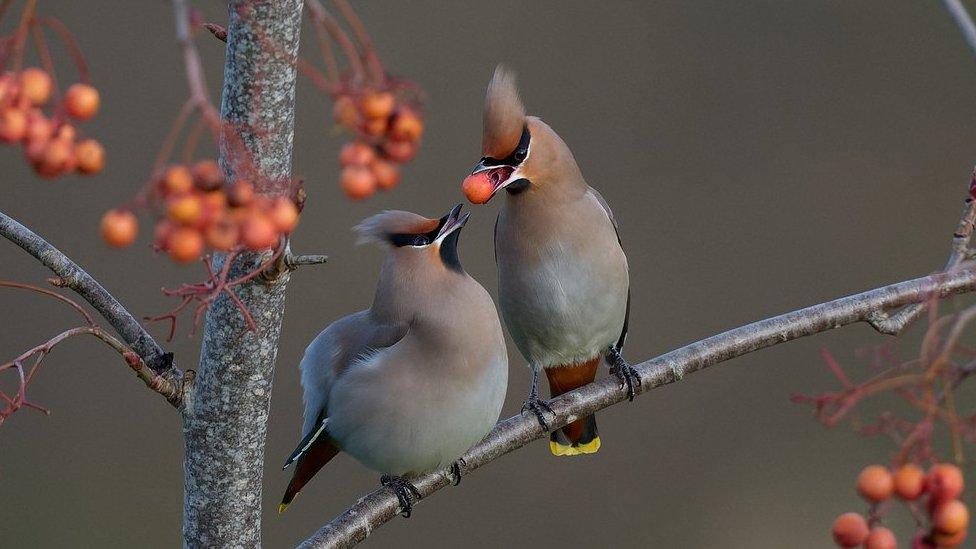
The birds were seen on a housing estate in Corby
"They don't come every year - sometimes if there's a really good harvest in the north, in Europe and Russia, they won't come.
"The last time we had goodly numbers... was round about 2017, so it's great to see them now."
He said the birds were usually seen in town centres and supermarket car parks where they could find their favourite berries - from rowan trees.
Mr Hanahoe said waxwings "look fantastic - they really do".
"They're a sort of velvety, browny, peachy, reddy colour, but then on the bottom of the tail they have a bright yellow strip, then up the sides of the wings are yellow flashes."
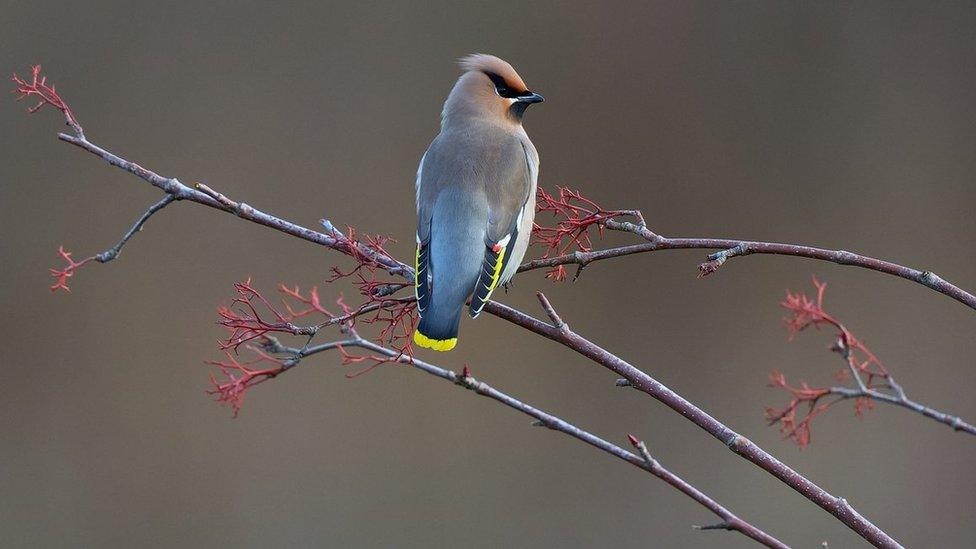
They have striking flashes of yellow through their feathers
He said the red tips of the wings gave the birds their name, "because the red is very much like the colour of the wax used in ancient times to seal letters".
"They also have a crest on their head, so they look truly beautiful. It's really smashing to see."

Follow East of England news on Facebook, external, Instagram, external and X, external. Got a story? Email eastofenglandnews@bbc.co.uk or WhatsApp 0800 169 1830
Related topics
- Published11 January 2024
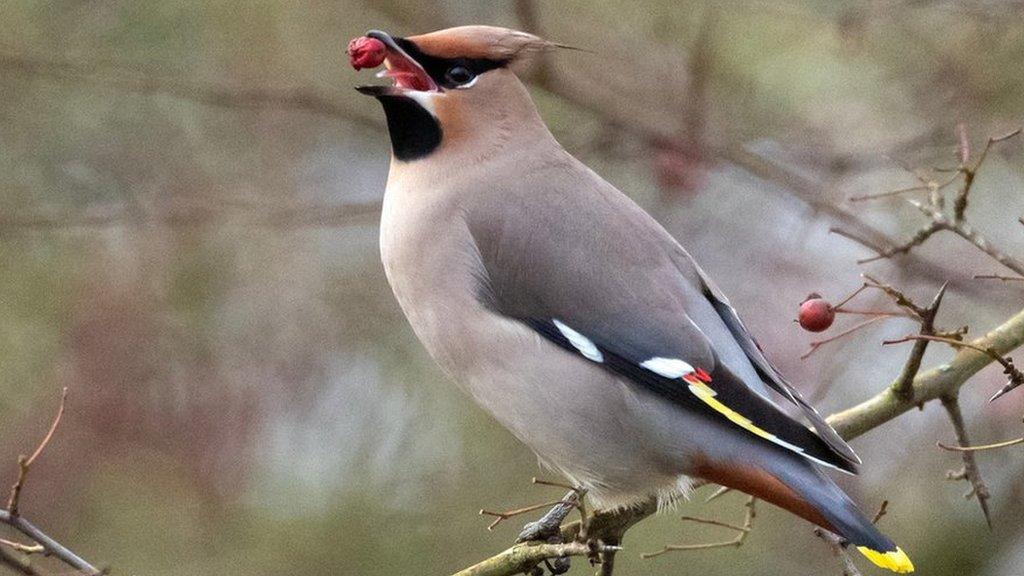
- Published8 January 2024

- Published19 November 2023
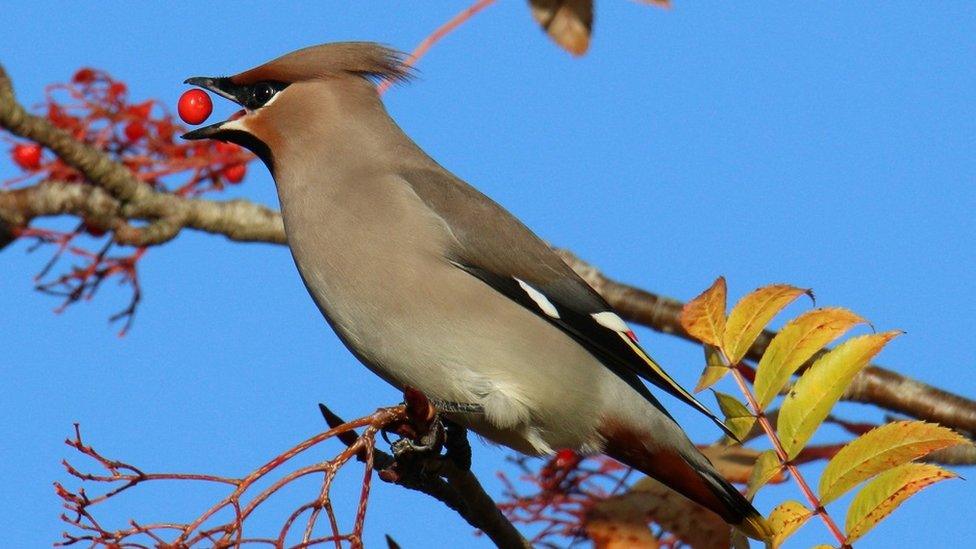
- Published28 January 2023
